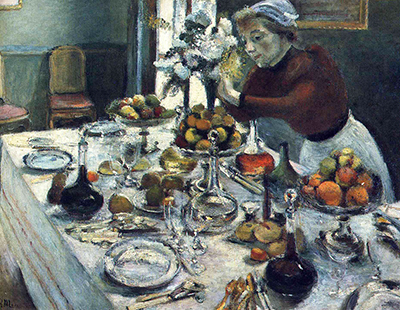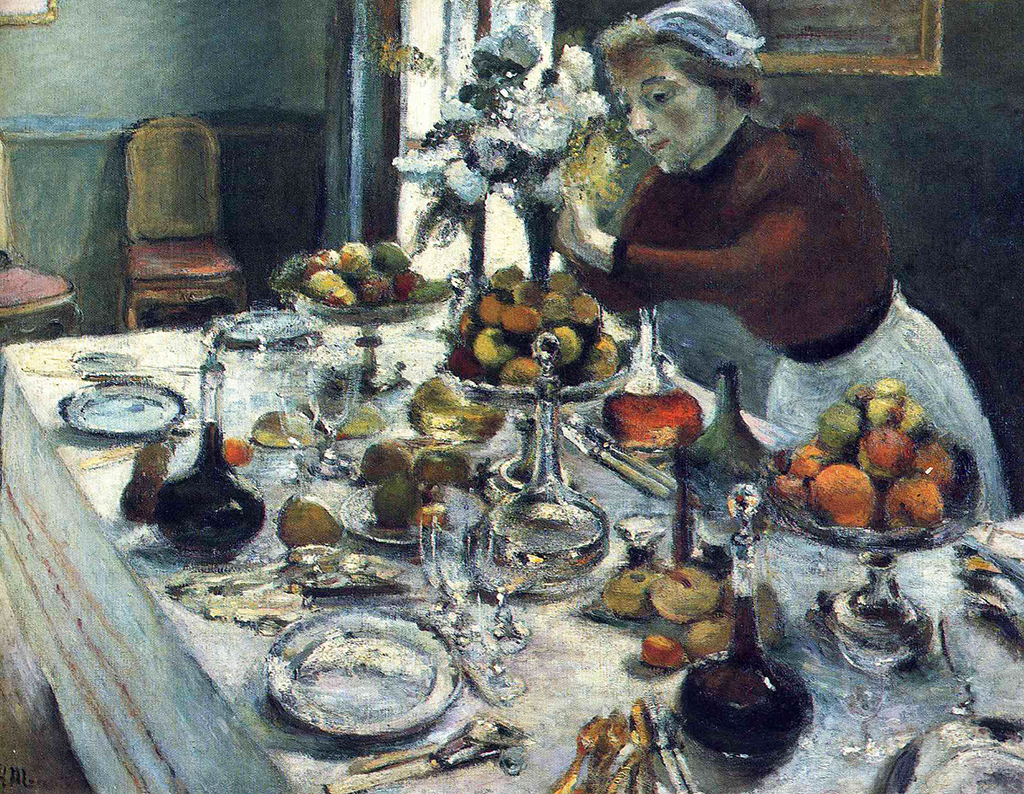The Dinner Table is one of Matisse’s earliest works. Painted in 1897, Matisse like most other artists of his time was influenced by ideas of impressionism, as implied by the brush strokes used. The oil on canvas painting is a reflection ofa novice painter.
For the starters, you will notice a lack of any particular genre. The most noticeable figure in the painting is that of the woman arranging a bouquet of flowers. On the table covered in a white tablecloth are different elements. The rays of bright sunlight flowing over the table makes the room where the family is about to gather for a meal look warm and cosy. The viewer notices fruits, decanters with drinks and neatly arranged cutlery. On the wall is a not clear picture, believed to represent some memory of the artist.
The arrangement of the table gives the viewer enough reason to admire the painting, as he purposely cuts off part of the luxurious dining table to show continuation beyond what can be seen on the artwork. Given that the artist is experimenting with the technique of impressionism, some influence of Moreau, Claude Monet and Renoir can be felt. Written in Fauvism style, this artwork is under the category of Matisse's brightest works. For the lovers of impressionism, this artwork will please.
Drawing closer to what was then defined as Fauvism, Matisse altered his style of painting. While his later work still maintained some similarities, there is notable difference. In the Desert: Harmony in Red, created in 1908, Matisse is seen to focus on producing balanced work. Like in other creations, here, he also emphasised on his style of flat and unnatural colour, inspired by Van Gogh’s work who he admired. In this painting, there are similarities with The Diner Table. The women in both works portray the same body language as they set the table, and there are fruits set for a meal. Yet, the contour line and the background are completely different.
Still Life with Chocolate Pot is his other creation produced in 1900 in Fauvism style. While the French chocolate pot created in the 17th century was purely designed for the preparation of hot chocolate drinks, Matisse looked beyond that. He was more focused on the design, from the shiny, silver surfaces, the roundness of the pot to the protruding handle. The bouquetit is seen holding refers to his wife and the flowers she crafted for her hat shop, said to have opened a year after they got married.
Interior with Young Girl Reading created in 1905-06 is composed of quick brushstrokes and a Fauve colour pallet. The girl in the picture is believed to be his 11-year-old daughter, while the chocolate pot in the artwork is seen to be a symbol of domestic livelihood.





